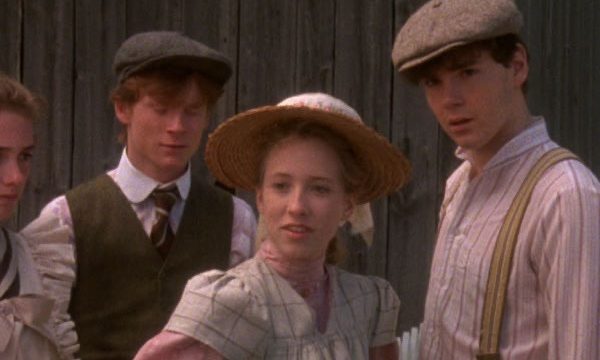I’m sure you’ll be shocked to learn that I was an unusual child. Rather than playing tetherball, my friends and I played “pretend games.” I have a kindergarten report card that actually says “does not play well with others” on it. Because I got in trouble for taking a book to recess, you understand. Because I didn’t always fit in with the other children. And a lot of modern children’s programming would have made it worse, because the heroines in these shows have changed over the years, and not, in my opinion, for the better.
So very many of the shows my kids watch feature the quirky, imaginative girls I grew up with—but have changed them in ways that are, in my opinion, kind of toxic. These girls are now usually someone special—a princess or just sort of a really important person—and, worse, everyone likes them. And if the person doesn’t like them, they’re outright a villain. Or need to learn some kind of Valuable Lesson. There’s no room in these shows for “we just don’t get along.” This is actually a place where these shows can learn from the Victorian literature I read as a child, and that’s not something I say very often.
For one thing, while I won’t deny a certain superficial similarity between Sara Crewe and Anne Shirley, they also have their differences. Picture Anne never telling Miss Minchin what she thought of her; picture Sara knowing how to act with Matthew Cuthbert. Sara’s a lot more Perfect than Anne, I’ll admit, and we only see her lose her temper once, whereas Anne’s temper was always part of her. We never really see Sara get in trouble for not thinking ahead, but Sara’s life was a lot more limited than Anne’s in a lot of ways, and not just when she was a slave. (And she was; let’s not fool ourselves.) She was confined in place in London, not roaming a Prince Edward Island farm.
But think also of Alice, giving herself very good advice that she very seldom follows. Or Dorothy Gale, who I admit doesn’t have anyone that I can remember that she just doesn’t get along with but isn’t so obnoxious about it. And certainly gets in trouble now and again for just being as heedless and impulsive as Anne; it’s how she ends up in Oz in I think the fourth or fifth book. And if you’re looking at more recent but still not new, there’s no greater example of an interesting heroine in fiction than Ramona Quimby, who’s so complicated that in several of the books she appears in, she’s the problem to be dealt with!
I feel like this is all part of giving girls “positive role models” without realizing that there’s more to a positive role model than a cheerful, friendly girl who says things like, “Everyone likes hugs!” Because Ramona could tell you that, sometimes, that’s just not true. And when these girls screw up and have to fix it, for some reason, it’s never really acknowledged that it’s because they screwed up, which Anne or Ramona or Pippi could tell you is important to pay attention to.
These shows also underestimate the importance of Josie Pye. For those of you unfamiliar with Anne of Green Gables, Josie Pye is a girl in Anne’s class that she doesn’t like. Josie is shown as kind of obnoxious, true, but she’s never outright evil. She and Anne just kind of don’t get along. In at least one of the shows my kids watch, there’s a character more annoying than Josie Pye who never gets her just desserts and who is still friends with the heroine. The show treats her as just being who and how she is and kind of ignores that she’d be a real pain to hang out with—and that our Heroine doesn’t actually have to if she doesn’t want to.
Is it important that my three-year-old daughter learn the value of sharing? Yeah, it is. But the shows she watches that want to teach it to her all have the same heroine, and she’s just less interesting than the girls who taught it to me. Because those vibrant, entertaining, flawed girls were more than just positive role models. They screwed up and fixed their screw-ups. Sara’s one outburst of temper was all the more shocking because there was just the one, I grant you, but it was also completely understandable, and some of these girls on these shows don’t even have the one. Sara’s been around so long that she’s in the public domain now, and she’s still interesting. I suspect few of these cheerfully perfect girls from current programming will last that long.
My daughter’s not exactly a poor Victorian orphan, but you could help keep her family going by supporting her mom’s Patreon or Ko-fi!

